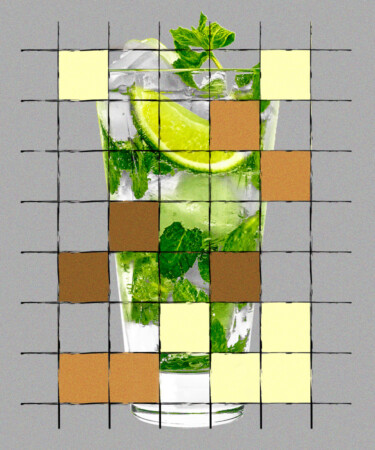Rum is one of the most complex, diverse spirit categories out there. From the juices of the hogo-rich dunder pits of Jamaica to the funky, grassy, terroir-driven expressions of Martinique, the transformative powers of molasses and sugar cane know no bounds — especially when they join forces.
In many of the world’s best cocktail bars, you’ll find bartenders borrowing a technique that’s been touted for almost a century: mixing multiple rums in a single drink. With other spirits categories, though, the practice isn’t nearly as common — a Tom Collins with three different gins might be seen as overzealous, and when’s the last time a bartender made the case for a multi-bourbon base in an Old Fashioned?
To understand why bartenders blend their rums — and why you should, too — we sat down with Anton Kinloch, co-owner of Lone Wolf in Kingston, N.Y.
Why Do Bartenders Blend Rums?
Though the method likely goes back further in time, bartender Donn Beach (a.k.a. Don the Beachcomber) pioneered the art of blending rums in the ‘30s, largely out of necessity. There were many copycats eager to recreate his drinks and sell them as their own, so Beach crafted rum blends and kept their specs under lock and key to render recreation nearly impossible. Since then, bartenders who specialize in tropical drinks have adopted the practice to maximize complexity and depth in their builds.
“Rum, in and of itself, has incredible terroir depending on the region, the cane varietal, and the way the juice or molasses is handled,” Kinloch says. “It’s got so much more variability than any other product on the market to my knowledge.” That’s not to say that other spirits categories are monotonous. But given the vast range of profiles the rum category boasts, blending allows bartenders to bring them together in one glass, similarly to how winemakers approach crafting red blends.
“If you’re dealing with molasses from Guyana versus fresh cane juice from Martinique, you’re gonna have vastly different flavor profiles,” Kinloch says. “Cane juice rum specifically has way more variability and complexity. With molasses rums, what you’re looking at is really the distillation method whether it’s pot or column distillate. That’s gonna have a huge bearing on the final product.”
When bartenders view different rums as building blocks, they can create their own house style, much like Beach did back in the day. This can help separate a bar program from its competition, but it can also benefit a bar’s bottom line.
“From the perspective of running a bar program, I usually find it more cost-effective and fun to have a blend of rums than just a singular expression,” Kinloch says. “You can take a not-so-great product and make it better by adding small quantities of something more potent and interesting. You also never end up wasting product because once you blend those rums together, you can continue to tinker with it, and it’s only going to improve as you build upon it.”
How to Make Your Own Rum Blend
There’s no hard and fast rule that dictates how to go about blending rums. You can use whatever ratios you like, and you can batch your rum blend according to how much of the spirit you have on hand. That said, considering where each rum comes from is a good place to start, since various countries of origin bear significant differences in style and flavor profile.
“In Spanish-speaking countries, you see more emphasis on barrel aging and blending,” Kinloch says. “With Jamaican rum, you’re gonna see more of the higher-ester, more full-bodied products. And with Guadalupe, Martinique — and even some of those other fresh cane juice rums like Cachaça from Brazil — those rums are gonna be lighter, brighter and more green.” According to Kinloch, these flavors seldom clash. There’s an application for every type of expression, and it all depends on your goal and personal preference.
Another factor to consider is price point. While combining three top-shelf rums might sound like a no-brainer taste-wise, it’s not the most economically viable approach, and some of the nuances in those high-quality rums can compete for dominance rather than harmonize. That doesn’t mean that such a blend will taste bad, but bartenders can achieve similar results with less of a blow to their bank account.
Kinloch recommends “[starting] off with something very basic, straightforward, and clean” as a foundation. From there, add smaller amounts of up to four, five, or six different rums with varying price points and profiles. Above all, Kinloch urges bartenders to “get creative, play around, and not feel like they’re constrained to just one bottle.”
Anton Kinloch’s Mai Tai-Ready Rum Blend
As a starting point, Kinloch shared his own secret-weapon rum blend. This is just one approach, but with this method, you can take your tropical drinks to the next level.
- 2 parts Jamaican rum, such as Appleton Estate or Hampden Estate
- 1 part rhum agricole, such as Saint James
- 1 part Barbados rum, such as Mount Gay or Probitas
Making Cocktails with Rum Blends
If the relatively simple Mai Tai isn’t enough to satisfy your newfound blending hobby, here is a handful of Don the Beachcomber classics to try out — all with seven or more ingredients, in true tropical fashion.
The Pearl Diver
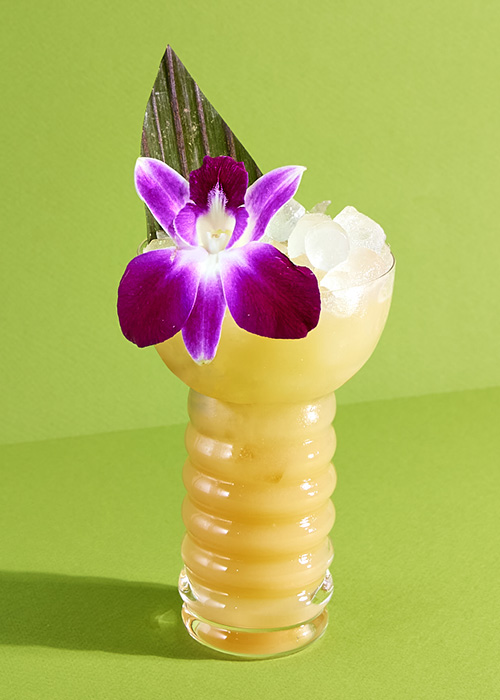
Beach’s Pearl Diver is definitely not a low-lift drink, but the juice is more than worth the squeeze. This interpretation of a cold buttered rum is creamy, complex, and employs a blend of Puerto Rican, Demerara, and Jamaican rums.
The Test Pilot
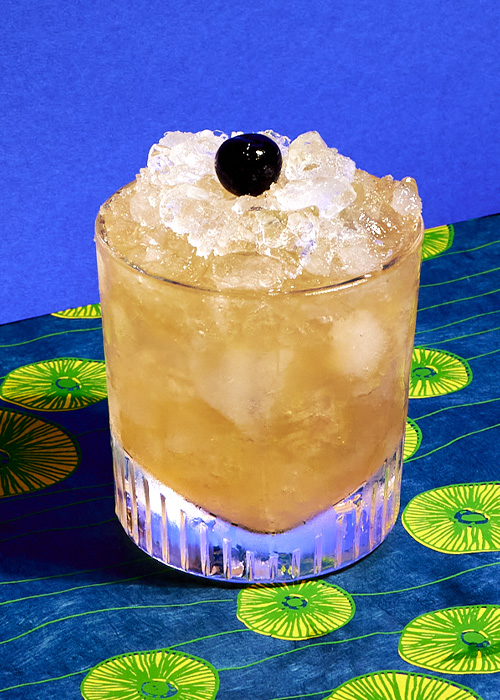
This drink is a boozy ode to Beach’s stint in the U.S. Air Force during World War II. The Test Pilot only includes two varieties of rum, but the addition of absinthe and an ensemble of liqueurs ensures a heady lift-off.
The Three Dots and a Dash
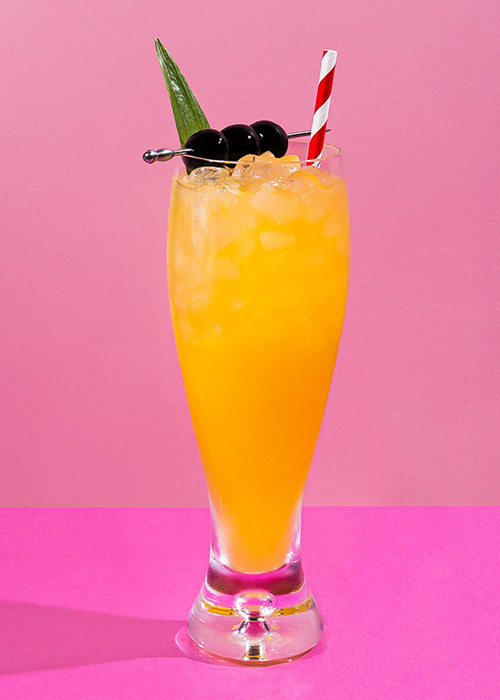
Like the Test Pilot, this cocktail is less fruit-forward than most tropical drinks. But it’s refreshing nonetheless, and a great format for highlighting rhum agricole. Traditionally, its garnish consists of three skewered maraschino cherries and a pineapple chunk, but Kinloch’s spec swaps the chunk for a frond, making for a more elegant take on the classic.
The Zombie
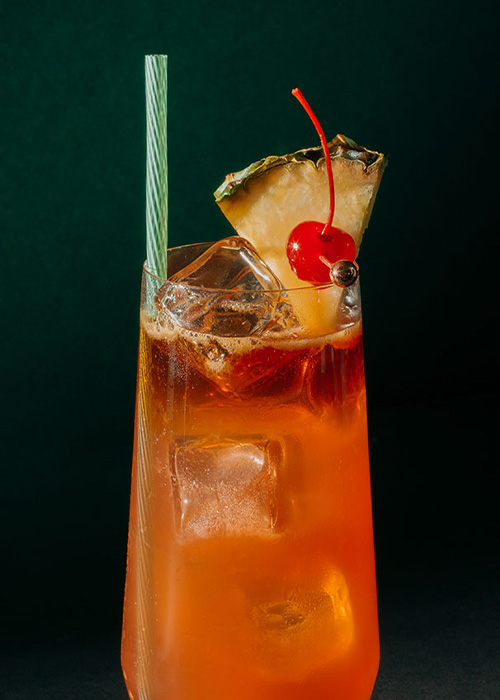
The Zombie is juicy, bold, and remains one of the most ordered tropical drinks in the world. With an assertive base of Puerto Rican and Jamaican rums, it’s such a stiff concoction that Beach famously set a two-per-customer limit at his restaurants.
*Image retrieved from elroce via stock.adobe.com
